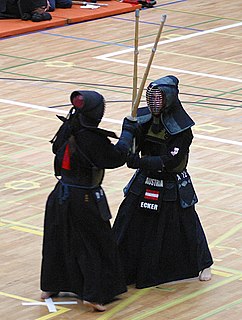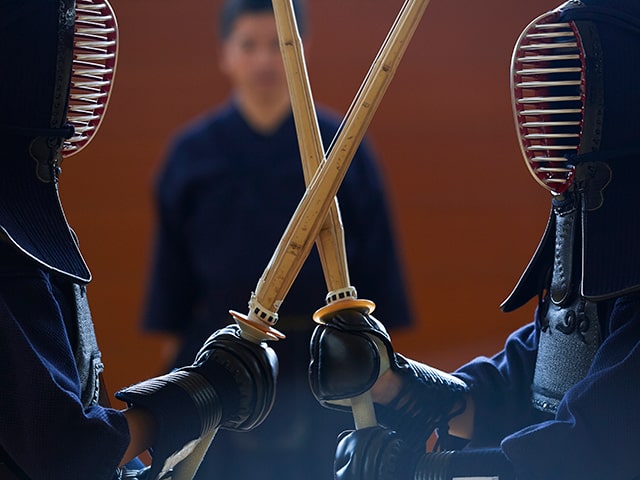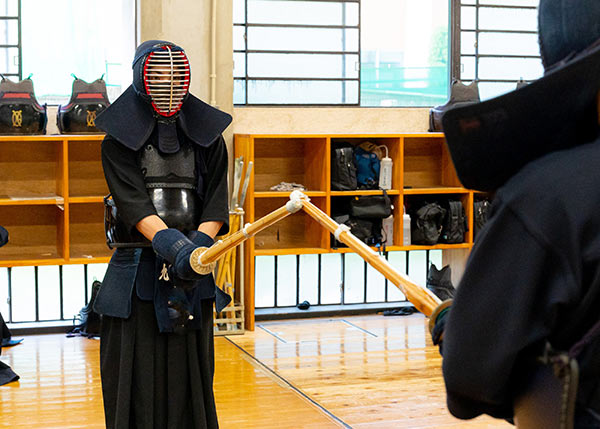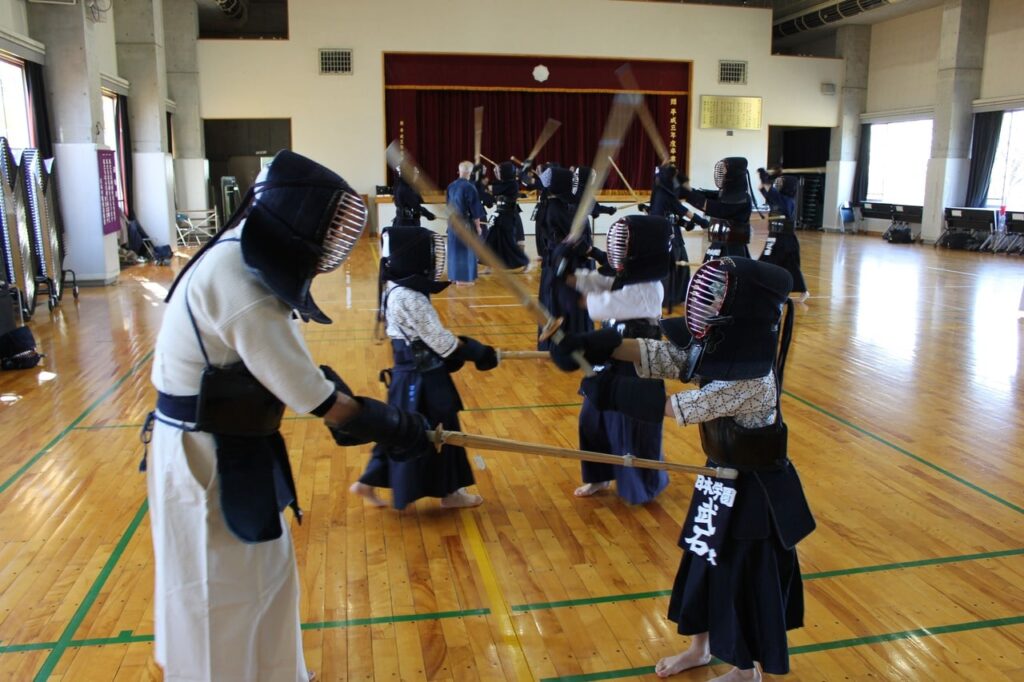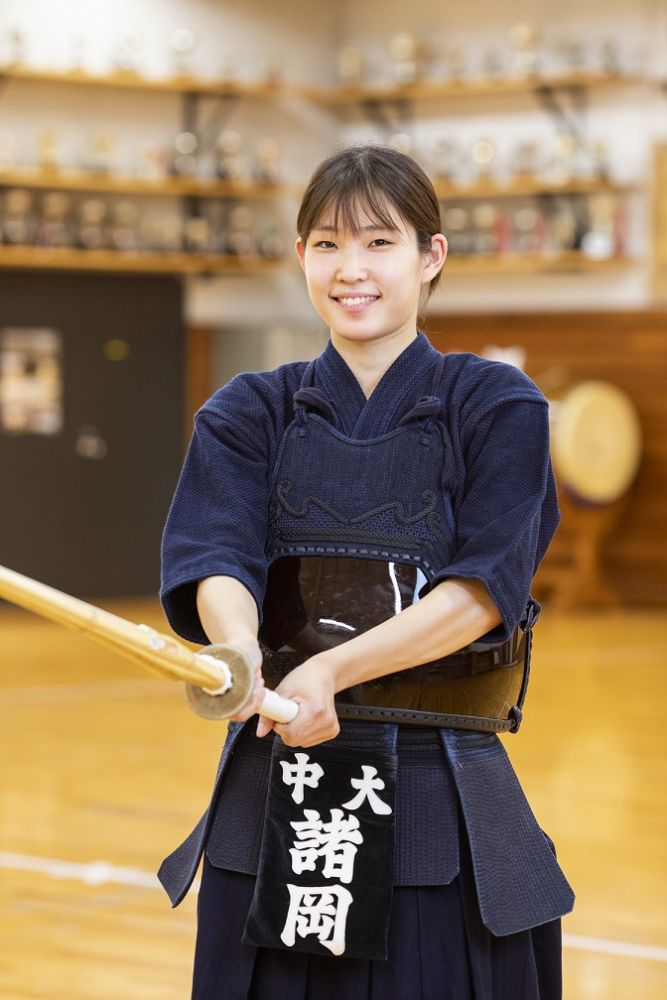
Kendo is a traditional Japanese martial art with its unique history, technique, and spirituality.
The appeal of Kendo, which continues to fascinate many people around the world, includes many elements that go beyond simply improving physical strength.
This article explores the deep historical background and cultural significance of how Kendo became such a beloved sport.
We will also analyze how Kendo contributes to personal growth, and its appeal not only from a technical perspective but also from a spiritual perspective.
In the following headings, we’ll start by exploring Kendo and its charm, and then take a closer look at its historical background and cultural significance.
目次
- 1 Introduction: Exploring Kendo and its charm
- 2 Historical background and cultural importance of Kendo
- 3 Spiritual aspects of Kendo
- 4 Kendo techniques and training
- 5 Comparison of Kendo and other martial arts
- 6 Kendo’s impact on community and society
- 7 Steps to start Kendo
- 8 Frequently asked questions and answers (FAQ)
- 9 Summary and tips for enjoying Kendo
Introduction: Exploring Kendo and its charm
Kendo is a traditional Japanese martial art that has spread its appeal all over the world.
This section provides basic information about Kendo and its unique charm that attracts many people from all over the world.
Kendo is a martial art that originally developed from Japanese samurai culture, and its history spans hundreds of years.
Kendo, as a “do”, contains philosophical elements and emphasizes training not only of the body but also of the mind.
This martial art is performed in a competitive format using bamboo swords called shinai (shinai) and armor, and has a complex training system that also includes kata exercises called kata.
The charm of Kendo
-
Spiritual growth : Kendo not only improves technique, but also promotes spiritual growth, such as courtesy, respect, and patience. These values are naturally acquired through practice, and are said to have a positive impact on daily life.
-
Improves strength and technique : Kendo is a full-body exercise that improves cardiovascular fitness, flexibility, and strength. In addition, by making full use of unique striking techniques and foot techniques, there is a technical depth that goes beyond mere exercise.
-
International Community : Kendo is widely practiced in Japan and abroad, and Kendo tournaments and seminars are held all over the world. This also serves as a venue for cross-cultural exchange, providing opportunities to build international friendships and networks.
-
Improving self-defense skills : Kendo training also contributes to improving self-defense techniques. Training not only on actual combat techniques but also on situational judgment and staying calm will improve your ability to deal with critical situations.
In this way, Kendo is more than just a sport or a hobby, and is an activity that is valuable in many ways for its participants.
The following headings will delve into more detail about the historical background of Kendo and its cultural significance.
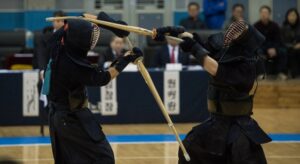
Historical background and cultural importance of Kendo
Kendo is a martial art that has developed over Japan’s long history, and its origins can be traced back to ancient samurai culture.
Here, we will take a closer look at how Kendo developed and its place in Japanese culture.
Development of Kendo
Kendo has its origins in the sword techniques used by ancient Japanese samurai to hone their fighting skills.
These techniques evolved over several centuries, and formalized sword techniques already existed during the Heian period.
Especially in the Muromachi period, various schools of swordsmanship emerged, each with its own unique techniques and philosophy.
In the Edo period, the period of peace continued for a long time, and samurai began to focus on refining their techniques rather than on actual combat.
This period saw an important shift from Kenjutsu to Kendo, which became established as a form.
The aspect of Kendo as a “do” is emphasized, and not only technical training but also spiritual growth and moral education become important elements.
Position in Japanese culture
Kendo occupies a very important position not only as Japan’s national sport, but also as a part of its spiritual culture.
Kendo embodies traditional Japanese values such as courtesy, respect, and self-control.
These values are naturally acquired through Kendo training, and are said to have a positive impact on the daily lives of those who learn Kendo.
Kendo also functions as a tool for international cultural exchange.
Kendo is practiced all over the world and many international competitions are held, playing a role in spreading a part of Japanese culture to the world.
Through Kendo, non-Japanese people can also experience the spirituality and philosophy of Japanese martial arts, contributing to the promotion of mutual understanding.
In this way, Kendo is more than just a martial art, and has become a symbol of Japanese culture and spirituality.
Understanding this background makes it clearer why Kendo attracts so many people around the world.
The next section will explore this in more detail, focusing on the spiritual aspects of Kendo.
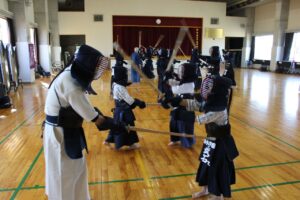
Spiritual aspects of Kendo
Kendo is more than just a martial art that hones physical skills.
At its root is a deep spiritual philosophy, and Kendo promotes the inner growth of individuals.
Here, we explore Kendo’s spiritual philosophy and how it contributes to personal growth.
Spirituality and philosophy of Kendo
The philosophy of Kendo is based on the idea that “Kendo is a way of human development through the way of the sword.”
This philosophy shows that Kendo goes beyond simply acquiring combat techniques and aims at the moral and spiritual maturity of each individual.
Training emphasizes moral values such as courtesy, respect, and honesty as much as technical mastery.
Kendo emphasizes the spirit of “doing your best” and requires you to do your best.
This is not just about winning a match, it is said that true growth occurs in the process of challenging one’s limits and transcending one’s ego.
Contribution to personal growth
Kendo training is a process of developing habits of self-control and self-reflection. Through training, swordsmen learn how to control their emotions and impulses.
This develops the ability to make quick and accurate decisions while remaining calm, and improves decision-making and perseverance in everyday life.
Kendo also emphasizes sustained effort and self-improvement, so these values spill over into many other areas of life, including school and the workplace.
The concentration, tenacity, and goal-achieving attitude cultivated through Kendo can be important qualities in a person’s career, academics, and relationships.
The spiritual aspect of kendo offers more than just physical strength for participants.
It is about enriching your life and developing the inner strength to face challenges.
This philosophy positions Kendo not just as a sport, but as a place for lifelong learning and self-improvement.
In the next section, we will focus on Kendo techniques and training, taking a closer look at its specific content and practice methods.
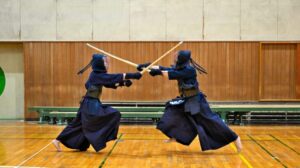
Kendo techniques and training
Kendo training begins with basic techniques and gradually progresses to more complex advanced techniques.
This process is a path for Kendo practitioners to not only increase their technical proficiency, but also their spiritual growth.
Below we provide a detailed guide to Kendo training.
basic technology
The basics of Kendo begin with correct posture and foot movement. This includes the following elements:
-
Basic stance (Kame) : In Kendo, a stable stance is extremely important. This involves placing your feet slightly wider than shoulder-width apart and slightly bending your knees. The basic stance in Kendo is generally the “chudan stance,” which provides a good balance between attack and defense.
-
Basic Uchi (Suburi) : Suburi forms the basis of Kendo’s striking techniques by practicing the basic movements of swinging a sword. This is essential to getting familiar with the sword and learning how to transmit power.
-
Footwork : Kendo requires the ability to move quickly and accurately. In addition to basic forward and backward movements, you will also practice movements such as turning around.
advanced technology
Advanced techniques in Kendo include more complex striking types and tactics. This includes the following techniques:
-
Kote-uchi : A sophisticated technique aimed at the opponent’s wrist that requires timing and precision.
-
Men-uchi : This is the most common attack method that aims at the opponent’s face (head). In order to do this accurately, it is important to have a sense of distance and know the exact point of impact.
-
Torso : A technique that aims at the opponent’s torso, often using movements from the side. Quick footwork and accurate striking are required.
practice (keiko)
Kendo training is carried out using a practice method called “keiko.”
Training consists of “kumite,” which is done in a one-on-one format, and “kata,” which involves practicing kata.
Kumite tests techniques in situations similar to actual combat, and kata is important for honing the accuracy and beauty of techniques.
Kendo techniques and training go beyond simply strengthening physical strength and improving technique; they promote the spiritual and moral growth of kendo practitioners.
By continuing to refine your techniques step by step in this way, you will gain a deep understanding and proficiency as a Kendo practitioner.
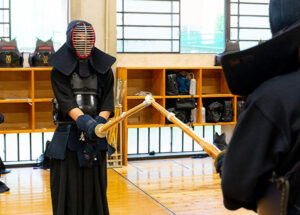
Comparison of Kendo and other martial arts
While Kendo shares characteristics with many martial arts, it also has its own unique characteristics and competitive format.
Here we explore in detail how kendo differs from other martial arts and its unique competitive format.
Differences between Kendo and other martial arts
-
Equipment and Weapons : Kendo is practiced using a bamboo sword called a shinai and wearing protective gear. In contrast, striking martial arts such as karate and taekwondo use only the hands and feet and no or only light protection. In addition, in martial arts such as judo that focus on throwing techniques, no special weapons are used, and the participants exchange techniques while wearing judo uniforms.
-
Competition Rules : Kendo competitions are held one-on-one within a fixed area, and points are awarded for hitting the correct striking points. This has some similarities to the rules of boxing and fencing, but kendo emphasizes accurate strikes to specific areas (men, torso, kote, throat) and is valued for technique and spirituality. .
-
Spirituality and Philosophy : Kendo places great emphasis on philosophy as a “do,” and Kendo training is aimed at self-development and improving spirituality. In contrast, many other martial arts often focus on practical self-defense techniques and improving physical strength, with less emphasis on philosophical and moral elements than in kendo.
Unique competition format
Kendo’s competitive format is known as a “match,” in which players hone their technique and spirit through confrontations with their opponents.
Matches are usually played within a time limit and compete for effective striking. Effective strikes are recognized as points when technical accuracy, power, voice, and push of the tip of the sword are recognized.
This competitive format reflects the unique spirituality of Kendo, as it requires you to continually challenge your limits while maintaining respect for your opponent.
Through these unique characteristics, Kendo is respected around the world as a martial art that offers deep spiritual and cultural values that are more than just physical techniques.
The next section further explores Kendo’s impact on community and society.
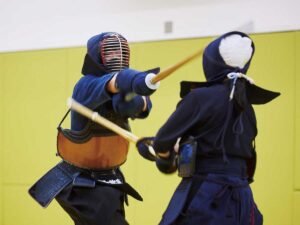
Kendo’s impact on community and society
Kendo not only offers many personal benefits to its participants, but the social impact of the community formed through Kendo is also enormous.
This section explores the characteristics of the Kendo community and its impact on society.
Characteristics of the Kendo community
The Kendo community is a place where people with common interests come together, and its members are diverse regardless of age, gender, occupation, or nationality.
This community generally consists of kendo dojos, national and international kendo organizations, and even online forums.
At the dojo, not only kendo techniques are taught, but also social skills such as courtesy and mutual respect.
Kendo training fosters not only the self-growth of individuals, but also the cooperation and support of the entire community.
Training within the dojo provides an opportunity to strengthen bonds with fellow students and foster a sense of social solidarity through interactions between teachers and students, or between seniors and juniors.
Impact on society
The Kendo community positively impacts society through its educational aspects.
The politeness and respect that Kendo training emphasizes are useful in many situations in daily life, including school, work, and home.
Kendo also provides techniques for self-regulation and stress management, which contribute to individual mental health and promote the health of the wider community.
Kendo events and tournaments serve as cultural activities in local communities, bringing together people from different backgrounds.
This promotes interaction between regions and provides an opportunity to deepen cultural understanding.
Furthermore, international kendo tournaments also serve as a platform for promoting international friendship and understanding.
These social impacts arising from the Kendo community can bring about positive change not only for individual members, but also for broader society.
In the next section, we’ll take a closer look at the specific steps to start Kendo and some advice for beginners.
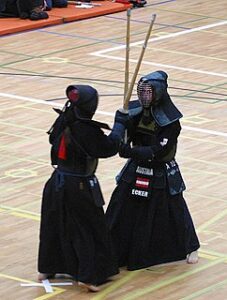
Steps to start Kendo
Starting Kendo is the first step to learning new techniques and achieving spiritual growth.
Below is some specific advice and recommendations for beginners to get started with Kendo.
How to choose a dojo
-
Find a local dojo : The first step to getting started with Kendo is to find a dojo near you. Search on the internet or ask your local sports or cultural center.
-
Dojo tours : It is important to visit multiple dojos to get a feel for the atmosphere, the classes, and the opportunity to talk with the instructors. Find out if the teaching method is right for you.
-
Trial Participation : Many dojos offer free or paid trial lessons. Try it out and see if it’s right for you.
Necessary equipment
-
Shinai and Kendo Gi : You may be able to borrow a Shinai from your dojo initially, but we recommend purchasing your own Shinai. The same goes for Kendo wear.
-
Protective gear : Kendo protective gear often requires a large initial investment for beginners, but can generally be rented at the dojo. If you decide to buy it yourself, consider the advice of your instructor.
Basics of Kendo
-
Practicing the basic stance (kame) : Learn the correct stance, which is the basics of kendo. This includes foot position, body orientation, and how to hold the shinai.
-
Learning basic techniques : Practice the basic techniques of kendo (men-uchi, kote-uchi, and do-uchi). These techniques form the basis of kendo and serve as a basis for technical improvement.
Continuous learning of Kendo
Kendo is not something that can be learned overnight.
It requires long-term practice and dedication. It is important to continue walking the path of Kendo by participating in regular training at the dojo and receiving guidance from your seniors and instructors.
It is also important to learn the philosophy and history of Kendo and train not only your technique but also your mind.

Frequently asked questions and answers (FAQ)
Below we provide clear answers to frequently asked questions about Kendo.
These are common questions asked by Kendo practitioners, from beginners to advanced.
Q1: Is there an appropriate age to start Kendo?
A1 : Kendo can be started at any age, but children usually start at the age of 5 or 6. Even if you are an adult, it is not too late and you can move forward by learning the basics.
Q2: How much time does it take to practice Kendo?
A2 : Kendo is a martial art that requires continuous learning. We recommend practicing 2-3 times a week for 1-2 hours each, depending on your individual goals and level. Improvement takes continued practice and time, so long-term commitment is important.
Q3: Where can I purchase the equipment used in Kendo?
A3 : Kendo equipment can be purchased at specialized martial arts stores or online shops. Many sets for beginners are also on sale, allowing you to get all the necessary equipment such as bamboo swords and armor. It is also a good idea to refer to recommendations from your dojo or seniors.
Q4: Is Kendo training hard on the body?
A4 : Kendo training is an exercise that uses the whole body, and beginners in particular may experience muscle soreness, but if done properly, it will lead to improved physical strength. It is important to adjust the intensity of your training according to your physical condition and gradually get your body used to it.
Q5: How is Kendo different from other sports and activities?
A5 : Kendo is more than just a physical exercise; it is a martial art that emphasizes etiquette, respect, and spirituality. It differs from many other sports and activities in that it not only helps you learn skills, but also helps you grow mentally.
These FAQs serve as an introductory guide to basic questions that those interested in Kendo may have.
For more detailed information or specific issues, we recommend consulting with a professional instructor.

Summary and tips for enjoying Kendo
Kendo can be enjoyed not only for its technical aspects, but also for its spirituality and connection with the community.
Here, we will introduce some tips for continuing Kendo and bringing out its charm to the fullest.
Tips for enjoying Kendo
-
Set goals : Having specific goals to improve your kendo technique and dan level will help you stay motivated. Set small goals and experience personal growth each time you achieve them.
-
Participate in the community : Kendo is not something you do alone, and one of its appeals is the interaction with many people. By actively participating in dojos, tournaments, and seminars, and deepening your interactions as a member of the kendo community, you will enjoy kendo even more.
-
Have the right mindset : Kendo is not just about winning or losing, it’s about enjoying the process. Find meaning in each practice and see its value as an opportunity to improve yourself.
-
Regular Reflection and Feedback : Regularly reviewing your practice and seeking feedback from your instructors and seniors will help you correct technical mistakes and accelerate your growth.
-
Stay Healthy : Maintaining good health is essential to continuing your Kendo practice. Stay in optimal physical condition for training by getting proper nutrition and sufficient rest.
Continuing to practice Kendo not only improves technique, but also provides opportunities for spiritual maturity and deepening social connections.
If you use these tips and enjoy the path of Kendo, you will gain a deeper understanding of its depth and versatility.
